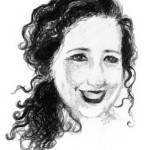There is a tombstone, towards the left back corner of the Grove Street Cemetery, that I find myself visiting every spring, as the weather turns warm and the cemetery once again becomes the perfect spot to take an afternoon walk. The tombstone marks the grave of a man, and on it is inscribed his academic position at Yale, every committee he sat on, where he went for his bachelor’s degree and even his graduate work. He seems to have been buried alone. Who was he? What was his life like? Why did these honors matter so much to him?
 Spring break usually marks the beginning of the close of the year. Final papers become real, summer decisions need to be tended to and seniors’ bucket lists gain new urgency. Campus is full of lovely libraries and historic buildings, but for stressed out Yale students, the cemetery is a large, beautiful and quiet space to escape for a few hours.
Spring break usually marks the beginning of the close of the year. Final papers become real, summer decisions need to be tended to and seniors’ bucket lists gain new urgency. Campus is full of lovely libraries and historic buildings, but for stressed out Yale students, the cemetery is a large, beautiful and quiet space to escape for a few hours.
Which is why I’m always surprised by the number of students, alumni and faculty that tell me they have never gone inside the cemetery.
I don’t know if this is because of a lingering taboo over death, or because the architecture of the cemetery, surrounded as it is by such a high and sturdy wall, erases it from public view. Everyone, of course, is familiar with the outside. Who hasn’t been creeped out by the inscription, over the entrance, “And The Dead Shall Be Raised”? (As the running joke goes, the dead shall be raised if Yale ever needs the space.) And the entrance gate, dedicated in 1845 and designed by Henry Austin, dominates Grove Street, visible all the way from Elm Street, past the Sterling Memorial Library. The Yale Health Center, evoking many jokes, looks directly over the graves, as do a number of the rooms in Swing Space. To walk up Prospect Street is to walk alongside the looming sandstone wall that surrounds the cemetery on three sides, with just the tallest of tombstone obelisks and angel statues peering out above it. The outside of the cemetery is a fixture. But pass the gate, inside the walls, is where it is worth an afternoon.
There is a lot to learn from cemeteries, especially one as old as that on Grove Street, which was founded in 1796. Scattered around the résumé-cum-tombstone of my scholar are other tombstones, listing other honors, recording different deaths. Nearby are the plots of Yale students who couldn’t be sent home for burial. Along the walls are the gravestones moved from the Green in 1821, without the bodies, decorated with the characteristic winged cherub face or skull and crossbones figurehead. Walk around the grounds, pausing now and then, and you find the most unusual names, surprisingly exotic birthplaces of men from the distant past — mostly the children of Christian missionaries — and information on family life; a treasure trove of details that once mattered so much to somebody. A number of the graves mark not only the years but also the months that the person lived, so that the inscription reads, “d. 86 yrs. 8 months.” Family plots, and the changing fashions in grave marker choices, yield so much about the attitudes towards death over the past couple of centuries.
When the two new colleges come in, the Yale campus will be centered around the Grove Street Cemetery, though the cemetery itself is independent of Yale University. Some people find this morbid. I don’t. We all know we are going to die — it is one of the few things we all know with certainty — and the cemetery presents death in a beautiful way. Still an active burial ground, with between 10 to 15 burials a year, it is a place for both mourners and visitors to come and find solace. I don’t think it needs to mix with the causal goings-on of student life. Proposals have been made in the past, most recently in 2009, to replace some of the foreboding wall with a fence, a decision that would open the cemetery up to viewers from the street, but it was met with a torrent of protest. For those uncomfortable with the intrusion of death into the public sphere, the walls and the gate keep the cemetery protected, away from daily life.
But just because the interior of the Grove Street Cemetery cannot be seen from the street does not mean it should be ignored. It is one of the most compelling and unique spaces around the Yale campus. I hope it stays the same, even as it becomes increasingly central, and I hope more choose to visit.
Shira Telushkin is a senior in Pierson College. Her column runs on alternate Thursdays. Contact her at shira.telushkin@yale.edu .







